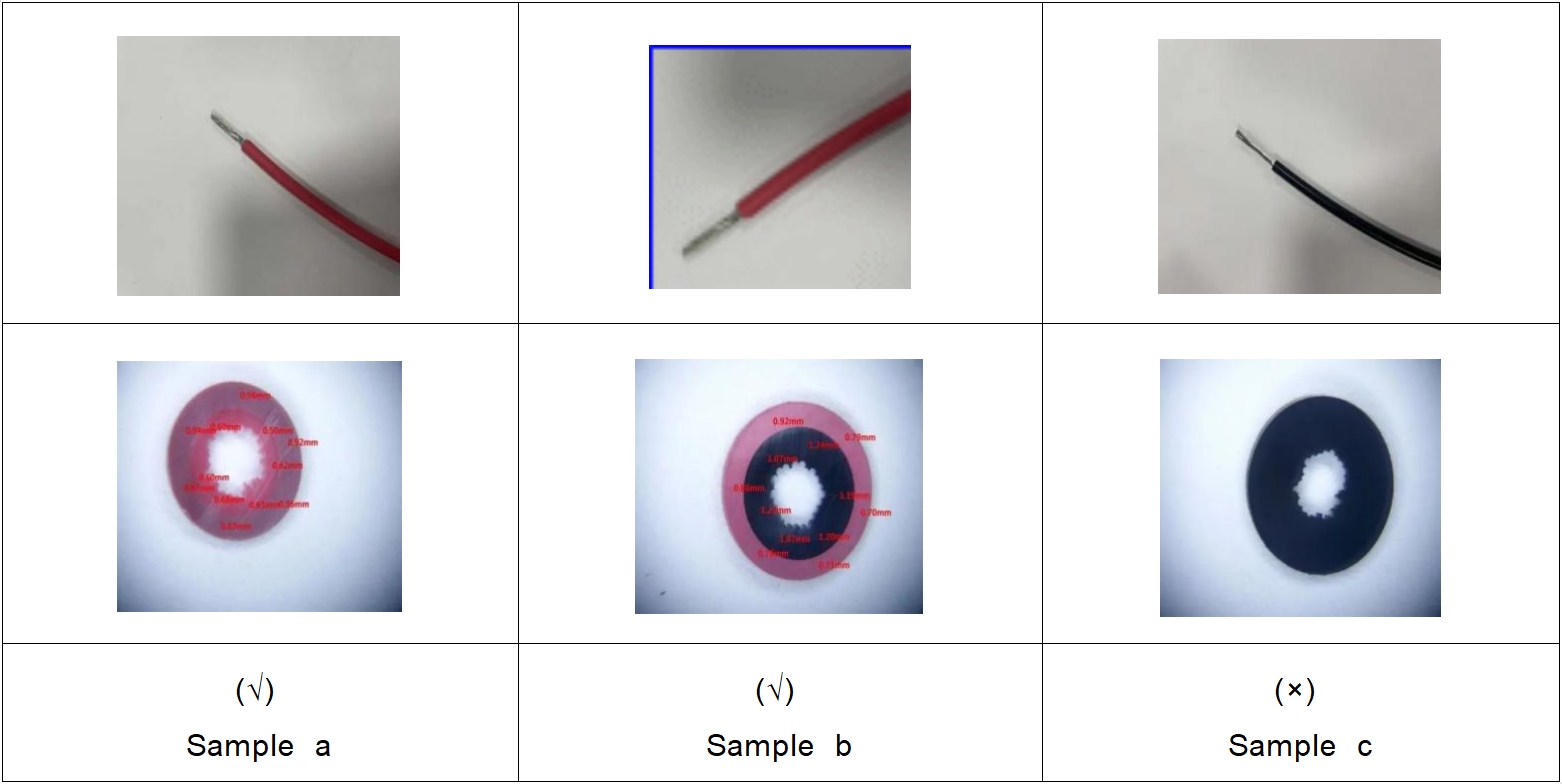Introduction
As an important basic supporting part for electrical equipment in power generation systems, the quality and safety performance of photovoltaic cable (PV cable) products are closely related to the stable operation of the entire system. In 2022, the IECEE organization has included photovoltaic cables (PV cable) in the (IECEE-CB) testing and certification scope, based on the standard EC62930:2017.
In recent years, double-layer co-extrusion processing technology has been widely used and promoted in photovoltaic cable (PV cable) manufacturing due to high production efficiency. However, the insulation and sheath layers of photovoltaic cables (PV cable) manufactured by double-layer co-extrusion process are tightly bonded and inseparable, which makes it difficult to prepare samples for some test items, such as structural inspection, insulation resistance, long-term DC resistance, etc., which makes it difficult for related products type testing and quality inspections bring considerable trouble, especially for double-layer co-extruded photovoltaic cables (PV cable) that are inspected on the market. The various parties have different understandings of the operation, and even cause disputes. To this end, driven by the efforts of the IECEE CTL ETF06 (CABL) expert group, IECEE has recently issued a CTL resolution: PDSH 2234, which deals with special requirements for double-layer co-extruded photovoltaic cables (PV cable with inseparable insulation and sheath). The testing requirements have been comprehensively sorted out and standardized.
This technical resolution clarifies the requirements for the color difference of the insulation and sheath of this type of double-layer co-extruded photovoltaic cable, the measurement methods of the insulation and sheath thickness, and the sample preparation requirements for related tests (insulation resistance test, long-term DC resistance test, sheath weather resistance test and damp heat test), and insulation low temperature bending test are not applicable. The resolution also specifically pointed out that it is unacceptable for some double-layer co-extruded photovoltaic cables(PV cable) currently on the market, which has the the same color in both insulation layer and sheath layer. It is believed that the promulgation and implementation of this resolution will play a positive role in regulating the design, manufacturing, testing and certification of double-layer co-extruded photovoltaic cables(PV cable), and promote the quality improvement and quality control of related photovoltaic cable(PV cable) products.
Topic
Note e of Table B.1 in IEC62930 stipulates: "When the insulation and sheath layer are adhered and it is impossible to prepare insulation and sheath specimens separately according to IEC60811-501, tubular specimens can be tested. The test results are used for both insulation and sheathing. / or sheath determination”.
However, as shown in Figure 1, when the insulation and sheath are bonded and inseparable, some special requirements for the test items in Table 3 and Table B.1 of IEC62930 need to be considered, such as:
Insulation resistance measurement (Table 3-1.4);
Long-term DC resistance test (Table 3-1.5);
Insulation thickness (Table 3-2.2.1);
Sheath thickness (Table 3-2.2.2);
Sheath weathering/UV test (Table 3-8);
Damp heat test (Table 3-10);
Insulation low temperature bending test (Table B.1-1.5);
Therefore, for photovoltaic cables with inseparable insulation and sheath, what should be done in these test items?

Resolution
When the insulation and sheath layer are adhered and the insulation and sheath specimens cannot be prepared separately according to IEC60811-501, the special requirements for some test items in Table 3 of IEC 62930:2017 are as follows:
Insulation resistance measurement (Table 3-1.4);
Requirement: Test the finished cable.
Long-term DC resistance test (Table 3-1.5);
Requirement: Test the finished cable.
Insulation thickness (Table 3-2.2.1);
Require:
Consider the insulation and sheath as a whole, and then prepare thin slices of the insulation and sheath as one unit as shown in Figure 1.
Preference is given to measuring microscopes.
In order to identify insulation and sheathing to determine thickness, the color of the sheathing should clearly contrast with the insulation. Therefore, samples a and b in Figure 1 are acceptable, and sample c is unacceptable.
Sheath thickness (Table 3-2.2.2);
Requirements: See Insulation Thickness Test.
Sheath weathering/UV test (Table 3-8);
Requirements: See note e of Table B.1.
Damp heat test (Table 3-10);
Requirements: See note e of Table B.1.
Insulation low temperature bending test (Table B.1-1.5)
Requirements: Not applicable.
Interpretation of resolutions
In IEC 60227-2: 1997 (Note: This standard is quoted in IEC 62930:2017, but has been replaced by 63294: 2021), it is mentioned: "This test applies to all cables, and the test should be 5 m long Conducted on insulated wire core specimens. Before measuring the insulation resistance, the specimens shall withstand the voltage test in accordance with 2.3 or, if not applicable, the voltage test in accordance with 2.2." And, IEC 60227-2: 1997 Clause 2.2 refers to "voltage test of finished cables". In other words, it is allowed to use finished cables for testing in insulation resistance measurements. This situation is also applicable to the long-term DC resistance test.
According to clauses 5.2.1 and 5.3.1 of IEC62930: 2017, insulation and sheathing materials are both cross-linked materials, and from the relevant provisions of Table B.1, it can be seen that insulation and sheathing have very similar physical properties.
In the sheath weathering/UV test and damp heat test, the specimens are also prepared according to IEC 60811-501.
IEC 60811-501 stipulates: "Tubular test pieces are used only when the size of the insulated wire core cannot be used to prepare dumbbell test pieces. Use dumbbell test pieces whenever possible." Therefore, for samples with conductor nominal cross-section greater than 16 mm2, dumbbell specimens are recommended.
Vocabulary definition.
Insulation and sheath are inseparable: here it means that insulation and sheath are adhered, and insulation and sheath specimens cannot be prepared separately according to IEC60811-501.
